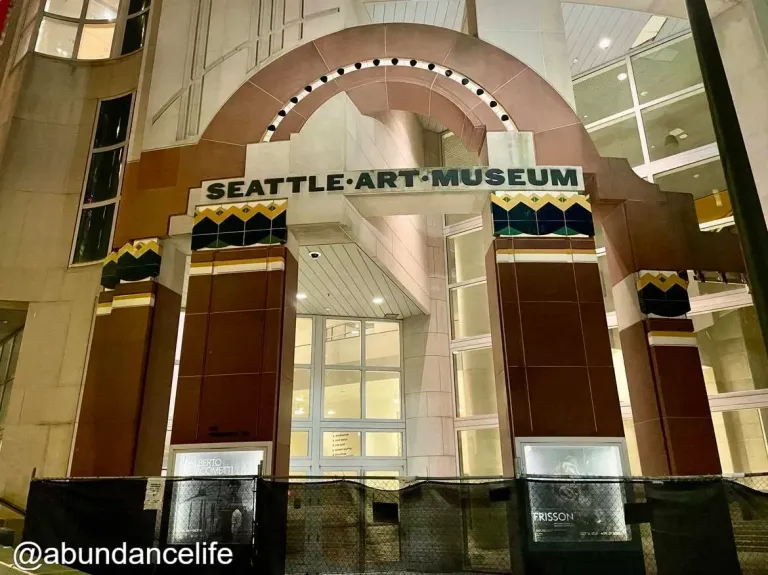
西雅圖美術館正門 The main entrance of the art museum
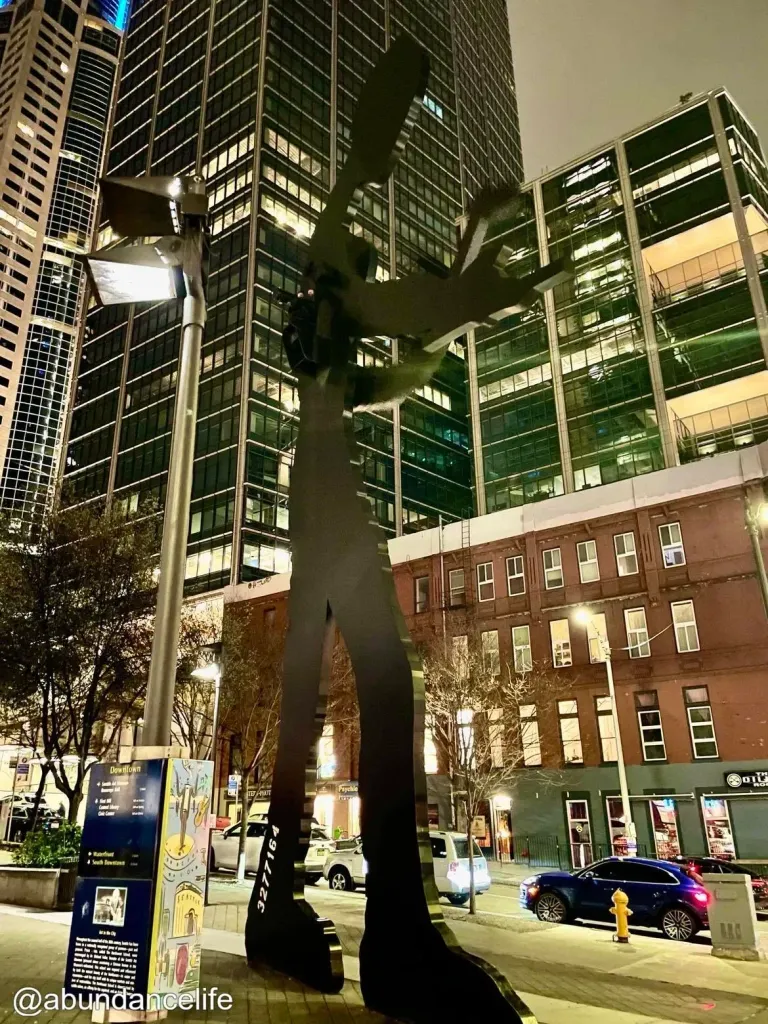
像佇立在高樓大廈的巨人 A giant standing among skyscrapers.
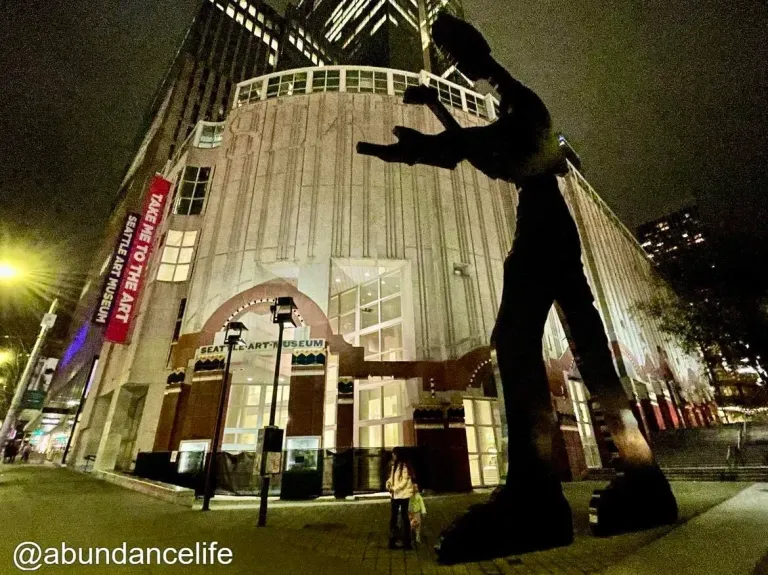
照片中的人真的很小 The person in the photo looks really tiny.
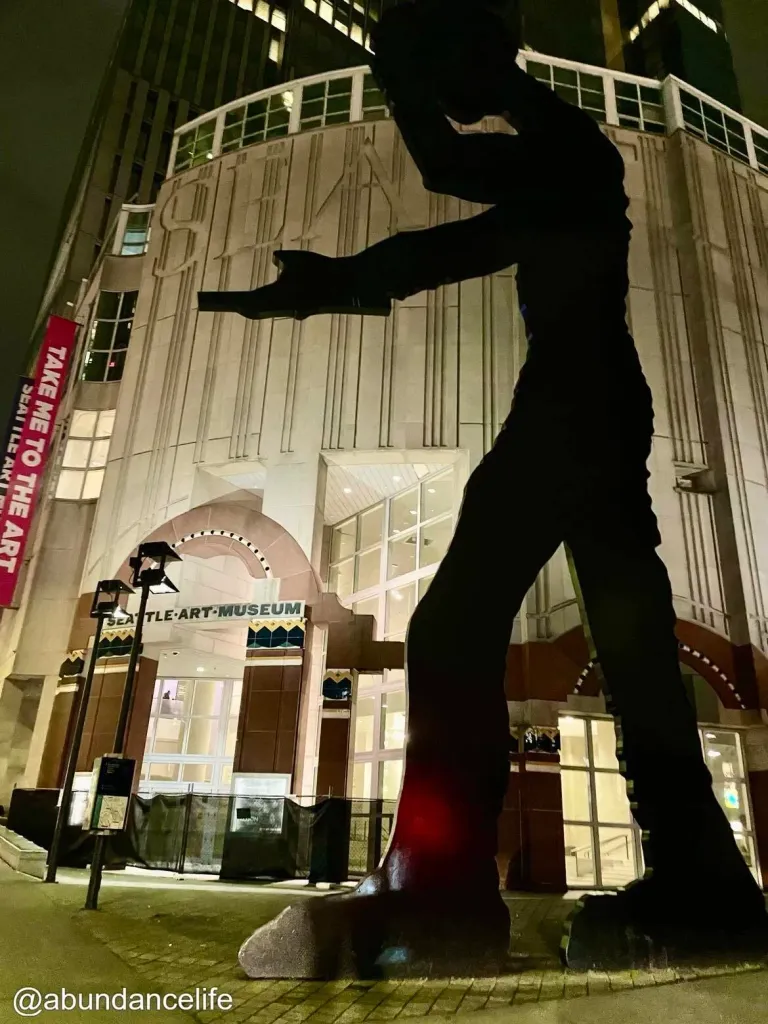
敲鎚工人真的非常巨大Hammering Man is huge.
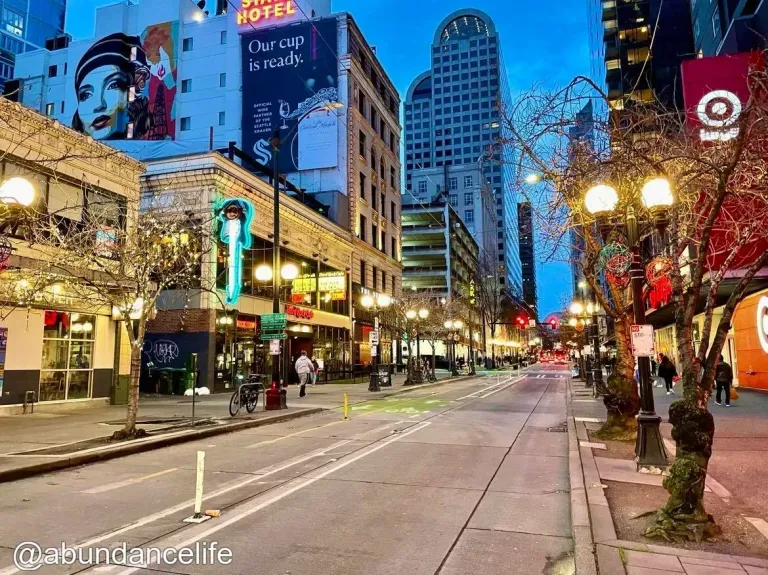
西雅圖市中心夜景 Night view in downtown Seattle
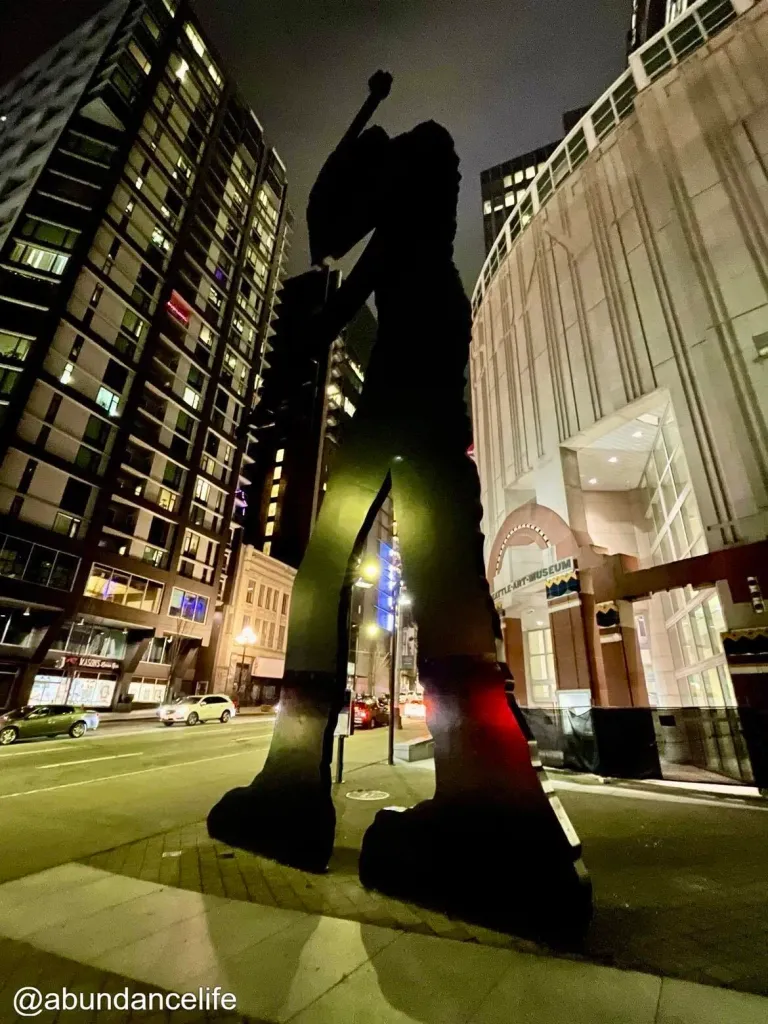
旅行住在西雅圖市中心的好處就是可以徒步到達位於市中心的任何地點,當時到達位於派克市場的旅館後,放下沉重的行李,因為行程是自由行,於是我開始在夜間探索西雅圖市中心。
西雅圖市中心還是滿美麗的,後來才知道原來市中心晚上治安不太好,但個人覺得除了遊民可能會攻擊您之外,好像也沒什麼危險性,加上一開始也是初來乍到,根本沒想到治安的問題,總之我到達西雅圖的第一天,完全沒有警覺性地走在燈火通明的馬路上,不知道的人可能會以為我是在地人,哈哈。
從派克市場步行約5至10分鐘就會看到西雅圖美術館 (Seattle Art Museum),聽說這個美術館非常值得一逛,不過由於我在西雅圖的時間非常短暫,加上到訪時也已經是晚上,華麗地錯過營業時間,所以非常可惜沒機會入館一遊。
不過我倒是被西雅圖美術館外的敲鎚工人 (Hammering Man) 裝置藝術給震驚到了,這個巨大工人以黑色鋼材製成雕塑,身長14.6公尺,約有4層樓高,其錘擊臂設計為每分鐘可上下移動四次,有趣的是敲鎚工人一年四季從早上7點到晚上10點會不停敲鎚,只有勞動節會停工。
敲鎚工人的設計理念是為了頌揚工人對西雅圖的貢獻和他們的勞動精神,所以在勞動節時該敲鎚工人會停止敲鎚,此舉不但符合設計精神,也非常具有象徵意義。
敲鎚工人作為西雅圖著名的景點之一,其設計者納森波洛夫斯基(Jonathan Borofsky)曾引用國家地理雜誌的一句話:「在西雅圖,人們不是為了工作而生活,而是為了享受生活而工作」(“People in Seattle don’t live to work; they work to enjoy their lives.” Kirsti Jones, National Geographic),不妨借由這句話來提醒自己好好享受人生吧~~
One of the perks of staying in downtown Seattle during my trip was being able to walk to any destination in the area. After arriving at my hotel near Pike Place Market and dropping off my heavy luggage, I set out to explore downtown Seattle at night, since I was on a self-guided trip.
Downtown Seattle is quite beautiful. I later found out that the area isn’t exactly the safest at night, but personally, aside from the possibility of being approached by homeless individuals, I didn’t feel particularly unsafe. Plus, it was my first time there, and I wasn’t even thinking about safety issues. On my first night in Seattle, I wandered through the brightly lit streets without a care in the world — someone who didn’t know better might have mistaken me for a local.
A short 5-to-10-minute walk from Pike Place Market brought me to the Seattle Art Museum. I’d heard that this museum is definitely worth a visit, but unfortunately, my time in Seattle was limited, and since I arrived at night, I completely missed the museum’s opening hours — what a pity!
However, I was blown away by the Hammering Man sculpture outside the museum. This massive figure, made of black steel, stands 14.6 meters tall (about four stories high). Its hammer-wielding arm moves up and down four times per minute, tirelessly "working" from 7 a.m. to 10 p.m. every day of the year — except on Labor Day, when it takes a well-deserved break.
The Hammering Man was designed to honor the contributions of workers and celebrate their labor. Its annual pause on Labor Day perfectly aligns with its intended spirit, making it a powerful symbol of the workforce.
As one of Seattle’s iconic landmarks, the Hammering Man was created by artist Jonathan Borofsky, who once quoted National Geographic’s Kirsti Jones: “People in Seattle don’t live to work; they work to enjoy their lives.” A perfect reminder for all of us to enjoy life to the fullest!
For the best experience view this post on Liketu